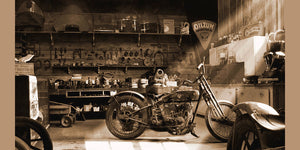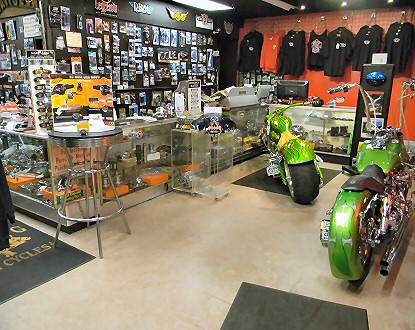Discover Top Quality Moto Parts NZ for All Your Motorcycle Needs
Discover Top Quality Moto Parts NZ for All Your Motorcycle Needs
Blog Article
Mastering Motorbike Gears: Just How to Enhance Your Riding Experience
In the world of motorcycling, grasping the art of equipment adjustment is important for improving your riding performance. Appropriately recognizing and making use of motorbike equipments can substantially affect velocity, control, and fuel effectiveness, transforming an ordinary experience right into a smooth, thrilling trip.
Understanding Gear Mechanics
At the core of motorcycle characteristics, equipment auto mechanics play a pivotal function in converting engine power into motion, inevitably dictating rate and control. The equipment ratios, very carefully designed, identify the relationship in between engine revolutions and wheel turns, impacting velocity and gas effectiveness.
Recognizing equipment auto mechanics begins with recognizing the value of the transmission, which houses numerous gears of varying dimensions. These gears interact with a process known as meshing, where teeth of different gears involve to send power. The precision of this communication is important; any kind of misalignment or damage can bring about ineffective power transfer, impeding performance. In addition, the arrangement and size of gears affect the motorbike's ability to handle different tons and speeds.
In addition, the concept of gear changing is integral to making the most of performance. Prompt and smooth changes ensure that the engine operates within its optimal power band, avoiding unneeded stress and improving longevity (motorcycle parts nz). By understanding these mechanical intricacies, riders can attain a harmonious blend of control, power, and effectiveness, elevating their riding experience
Timing Your Changes
Shift timing mastery is essential for optimizing motorbike performance and enhancing the riding experience. Effectively timed shifts make sure that the engine operates within its optimal power band, which is vital for keeping control, accomplishing smooth acceleration, and guaranteeing the durability of the motorbike. Motorcyclists must develop an intuitive feeling of when to shift equipments, which involves comprehending the connection between engine changes per minute (RPM) and speed.
To master change timing, pay attention to the engine's noise and feel, as these supply crucial ideas regarding when to change gears. When the engine approaches the top range of its power band without getting to the redline, the perfect change point usually takes place - motocross gear nz. Shifting as well early can lead to an absence of power, while changing also late might cause unneeded engine stress
Additionally, road conditions and riding design impact shift timing. In metropolitan setups, smoother and more constant changes may be needed to navigate traffic effectively. On the other hand, during freeway riding, fewer changes at greater speeds can be better suited. Practicing in different atmospheres will improve your capacity to time shifts exactly, inevitably raising your riding experience to a professional degree.
Enhancing Fuel Performance
While mastering motorcycle gears is essential for performance, enhancing fuel effectiveness is just as vital for both ecological and financial factors. Ideal gas usage not only decreases operational expenses but also reduces the environmental footprint of riding. To attain this, one must recognize the detailed relationship between equipment blog choice and engine efficiency.
Riding in a greater equipment at lower speeds can lead to engine hauling, which is harmful to both gas economic situation and engine wellness. Alternatively, riding in lower gears at high speeds results in unneeded gas intake.
Additionally, normal maintenance plays a pivotal role in gas effectiveness. Ensuring that the motorbike is well-tuned, with tidy air filters and correctly pumped up tires, can reduce and boost the rules of aerodynamics fuel wastefulness. Embracing a riding design that embraces progressive velocity and smooth deceleration can add to far better gas economic climate.

Techniques for Smooth Transitions
Accomplishing smooth equipment changes is basic to improving the riding experience and ensuring the longevity of a motorcycle's transmission system. Proper gear shifting not just adds to a smooth experience yet additionally reduces wear and tear on the mechanical parts. To understand the art of smooth changes, riders should concentrate on a few key methods.

Secondly, clutch control plays a crucial duty. Involving and disengaging the clutch efficiently needs technique. The clutch bar should be launched progressively, permitting a smooth transfer of power from the engine to the wheels without triggering a jolt or sudden motion.

Adjusting to Road Conditions
Browsing varied road problems is a critical ability for any type of motorcyclist intending to preserve control and safety and security. Whether you're Learn More riding on damp surface areas, crushed rock roads, or browsing sharp turns, your ability to adapt your equipment use and riding technique is critical. Recognizing how to change your gears suitably can dramatically affect grip and stability, ensuring a much safer trip.
On damp roadways, it is a good idea to keep higher gears to minimize torque and decrease wheel spin. This method helps keep hold on unsafe surfaces, enabling smoother acceleration and deceleration. On the other hand, when riding on crushed rock or irregular terrain, reduced equipments are preferable. Lower gears provide far better control and permit you to react more swiftly to unanticipated changes in the roadway surface area.
Sharp curves demand specific equipment management to balance speed and control. Downshifting before entering a contour can aid keep energy while making sure the motorbike remains stable throughout the turn. Regular technique in varied conditions boosts your capability to react and anticipate to adjustments in road texture and slope.
Verdict
Grasping motorbike equipments significantly boosts the riding experience by improving control, velocity, and gas efficiency. Adjusting equipment selection to different road conditions, such as utilizing greater equipments on wet surfaces and lower gears on crushed rock, more boosts handling and safety and security.
Comprehending gear auto mechanics begins with recognizing the relevance of the transmission, which houses several gears of differing dimensions. These equipments communicate through a procedure understood as meshing, where teeth of different equipments engage to transmit power (motocross gear nz). Mild modifications to the throttle during gear shifts can avoid jerky movements and maintain a constant riding speed
Whether next you're riding on wet surfaces, gravel roadways, or browsing sharp turns, your ability to adjust your equipment use and riding strategy is critical. Adjusting gear selection to different road problems, such as utilizing greater equipments on wet surface areas and reduced gears on gravel, additional improves handling and safety.
Report this page